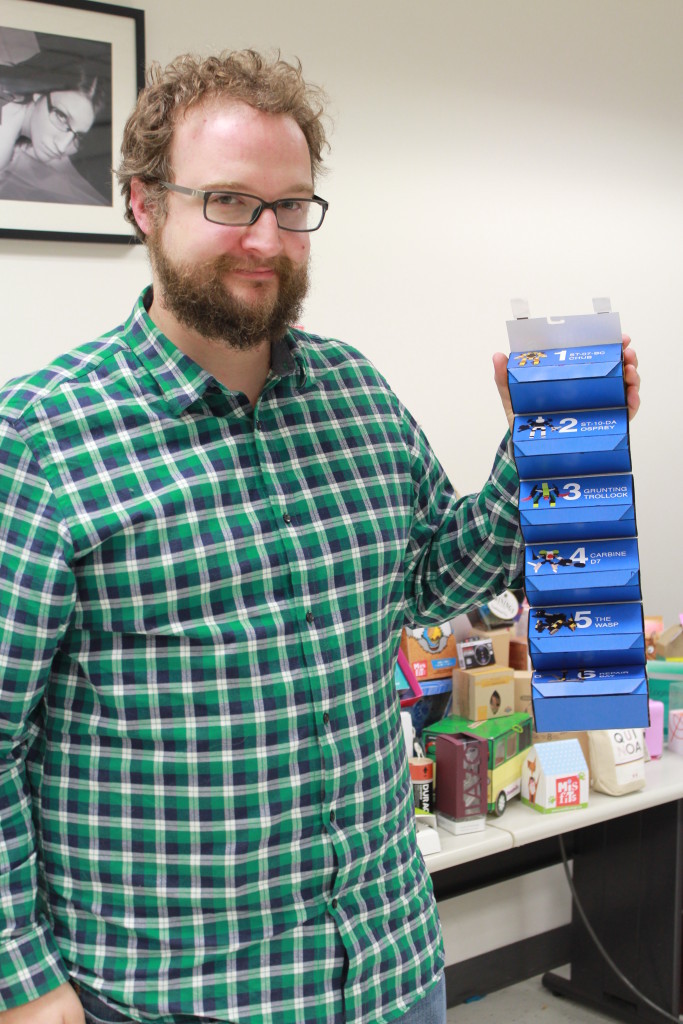Second year graphic design students were challenged by their professors to redesign and build packaging for products that use little material and are environmentally friendly.
Designing is an ever-changing industry and that is exactly what Algonquin’s graphic design program is training and preparing its students for.
The environmental factor was used for the first time this year. This was added because of the program changing and adapting to what the industry wants and needs.
Pushing their creative limits, the students worked for weeks on this time-consuming project.
They had to literally think outside the box.
“I was blown away by the ideas that poured out of my colleagues,” said graphic design student, Benjamin Comeau. “When looking at the work we did, I often found myself thinking, ‘That company should totally use this new design; it’s just better.’”
There were three product lines the students could choose from to redesign: small electronics, dry goods, or children’s toys. They had to be creative, innovative, and keep the environmentally-friendly aspect in mind throughout the process.
Some of what the students came up with was to decrease the package size or to use biodegradable materials. Some students even came up with the idea of using material that had seeds in its makeup.
The idea is to plant the material when the user is finished with it and it will grow into a plant.
“Every one of these packages, from an environmental standpoint, has been improved substantially,” said part-time professor, Angie Fahlman. “It was just fantastic.”
Creating a package has been part of the graphic design curriculum because it is important for designers to create their own templates in case they have to with their future jobs.
“Art designers, we usually do have a little bit of control because of what we can bring to the table in regards to a mock-up,” said Fahlman. “We have better chances that our clients might jump on board if we sell it.”
Designers inadvertently have some manipulation tools at their hands just from a design standpoint. The graphic design program wants to make sure that the students utilize them as they go out the workplace to try to make it a better world.
Many of the projects were multifunctional and had different design components to them that made them more than just a plain package.
For example, Comeau’s final product was a reusable LEGO package made of different sections and components that were stuck together with Velcro. Each compartment can store and sort the LEGO pieces after the original toy has been built.
He also added a hook so the package can be stored easily by hanging it.
“In my group, I felt it was universal,” said Comeau. “Every single one of us went a little beyond the project guidelines and we made our package fun or interactive or something really cool about the product that brings it another level that the producers of that products don’t have right now.”



